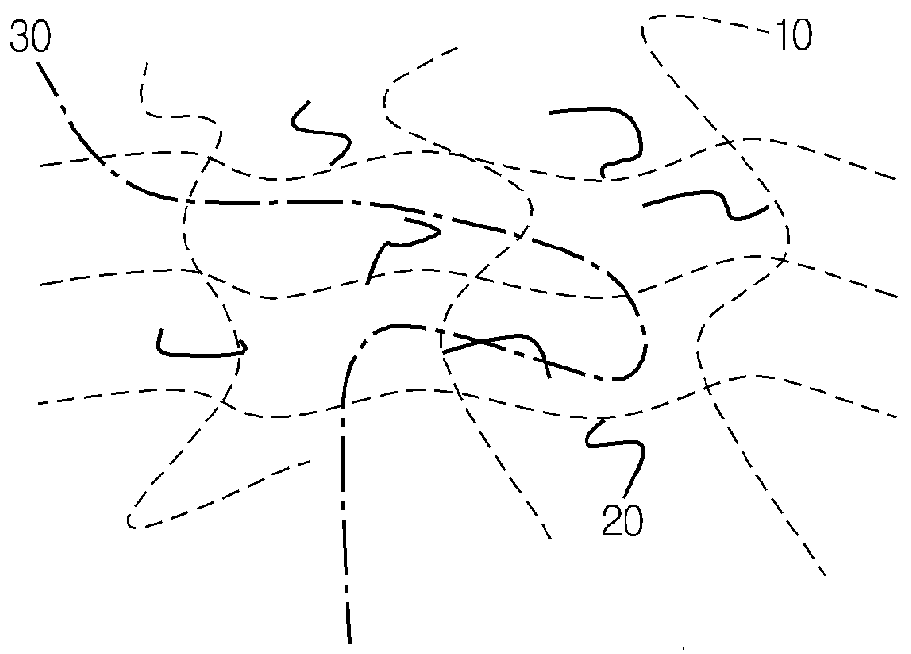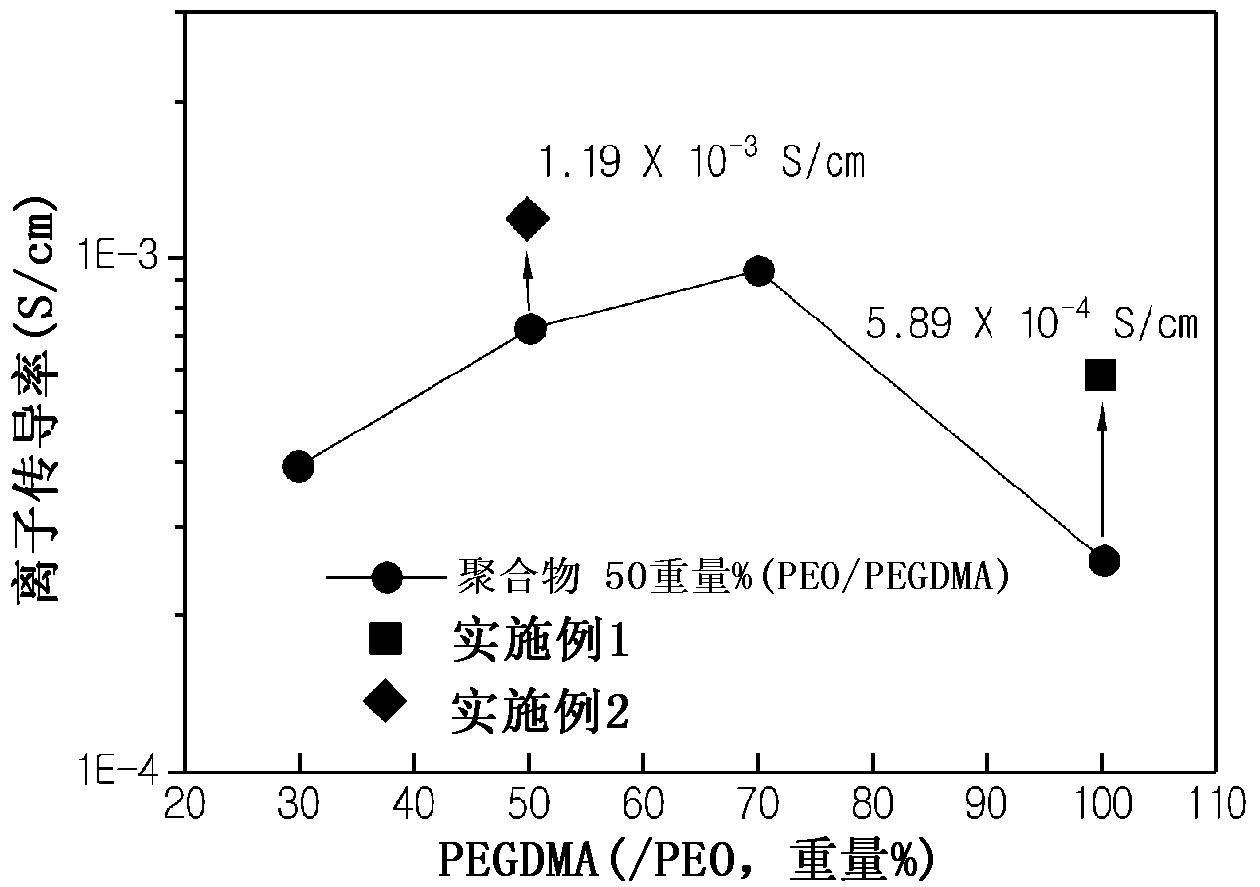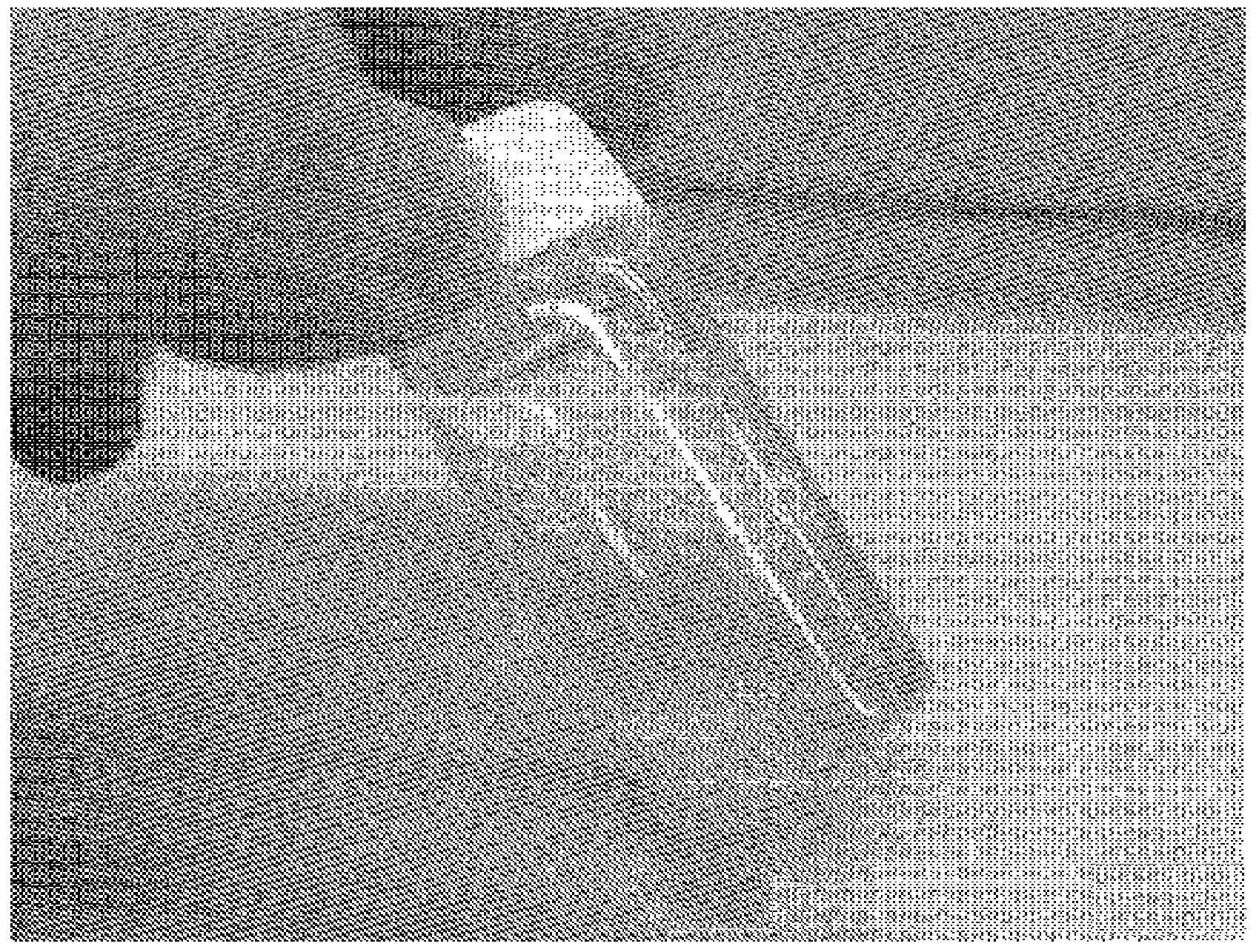Electrolyte for an electrochemical device, method for manufacturing same, and electrochemical device including same
An electrochemical and electrolyte technology, applied in the direction of non-aqueous electrolyte batteries, electrochemical generators, circuits, etc., can solve the problems of not having mechanical properties and complicated processes
- Summary
- Abstract
- Description
- Claims
- Application Information
AI Technical Summary
Problems solved by technology
Method used
Image
Examples
Embodiment 1
[0058] Embodiment 1: Preparation of PCE / PEGDMA / PEGMA solid electrolyte
[0059] For 50 parts by weight of succinonitrile as a plastic crystal electrolyte (PCE), 25 parts by weight of polyethylene glycol dimethacrylate (PEGDMA) with a weight average molecular weight of 400, and 25 parts by weight of polyethylene glycol dimethacrylate (PEGDMA) with a weight average molecular weight of 400 Alcohol methacrylate for mixing. Lithium bis(trifluoromethanesulfonyl)imide was added to the mixture in a molar ratio of lithium salt to PEGDMA and ethylene oxide units of PEGMA of 1:8. After homogenizing the mixture, benzoin as UV initiator was added to the mixture in an amount of 3% by weight, based on the total weight of PEGDMA and PEGMA.
[0060] Thereafter, the prepared mixture was cast on a glass plate and irradiated with UV light for 1 minute. As a result of the polymerization, an electrolyte is produced in the form of a membrane.
Embodiment 2
[0061] Embodiment 2: Preparation of PCE / PEO / PEGDMA / PEGMA solid electrolyte
[0062] For 50 parts by weight of succinonitrile, 25 parts by weight of polyethylene oxide, 12.5 parts by weight of polyethylene glycol dimethacrylate (PEGDMA) with a weight average molecular weight of 400 and 12.5 parts by weight of polyethylene glycol dimethacrylate (PEGDMA) with a weight average molecular weight of 400 Polyethylene glycol methacrylate for mixing. Lithium bis(trifluoromethanesulfonyl)imide was added to the mixture in a molar ratio of lithium salt to ethylene oxide units of PEO, PEGDMA and PEGMA of 1:8. After homogenizing the mixture, benzoin as UV initiator was added to the mixture in an amount of 3% by weight, based on the total weight of PEGDMA and PEGMA.
[0063] Thereafter, the prepared mixture was cast on a glass plate and irradiated with UV light for 1 minute. As a result of the polymerization, an electrolyte is produced in the form of a membrane.
PUM
| Property | Measurement | Unit |
|---|---|---|
| weight-average molecular weight | aaaaa | aaaaa |
| weight-average molecular weight | aaaaa | aaaaa |
Abstract
Description
Claims
Application Information
 Login to View More
Login to View More - R&D
- Intellectual Property
- Life Sciences
- Materials
- Tech Scout
- Unparalleled Data Quality
- Higher Quality Content
- 60% Fewer Hallucinations
Browse by: Latest US Patents, China's latest patents, Technical Efficacy Thesaurus, Application Domain, Technology Topic, Popular Technical Reports.
© 2025 PatSnap. All rights reserved.Legal|Privacy policy|Modern Slavery Act Transparency Statement|Sitemap|About US| Contact US: help@patsnap.com



